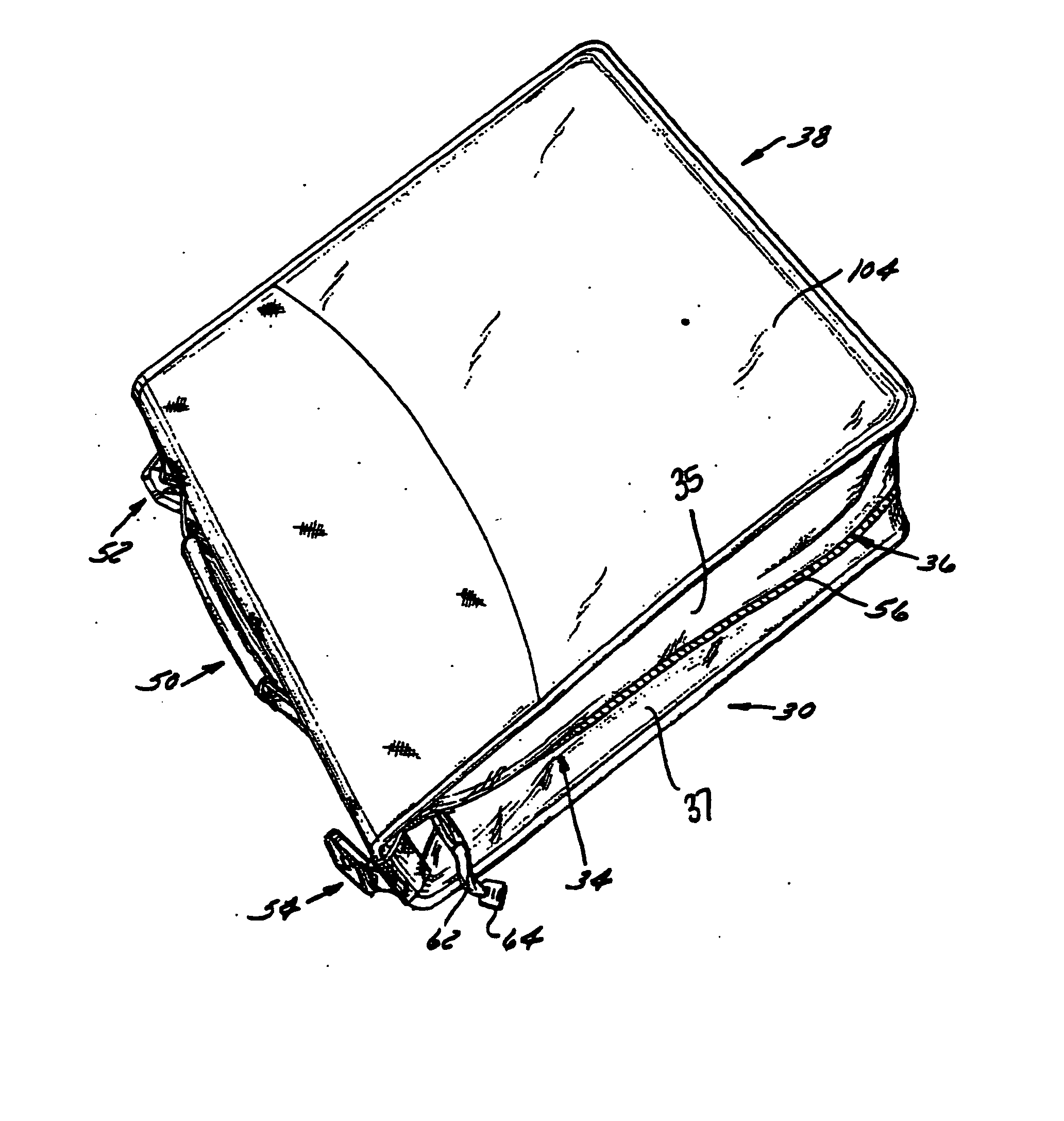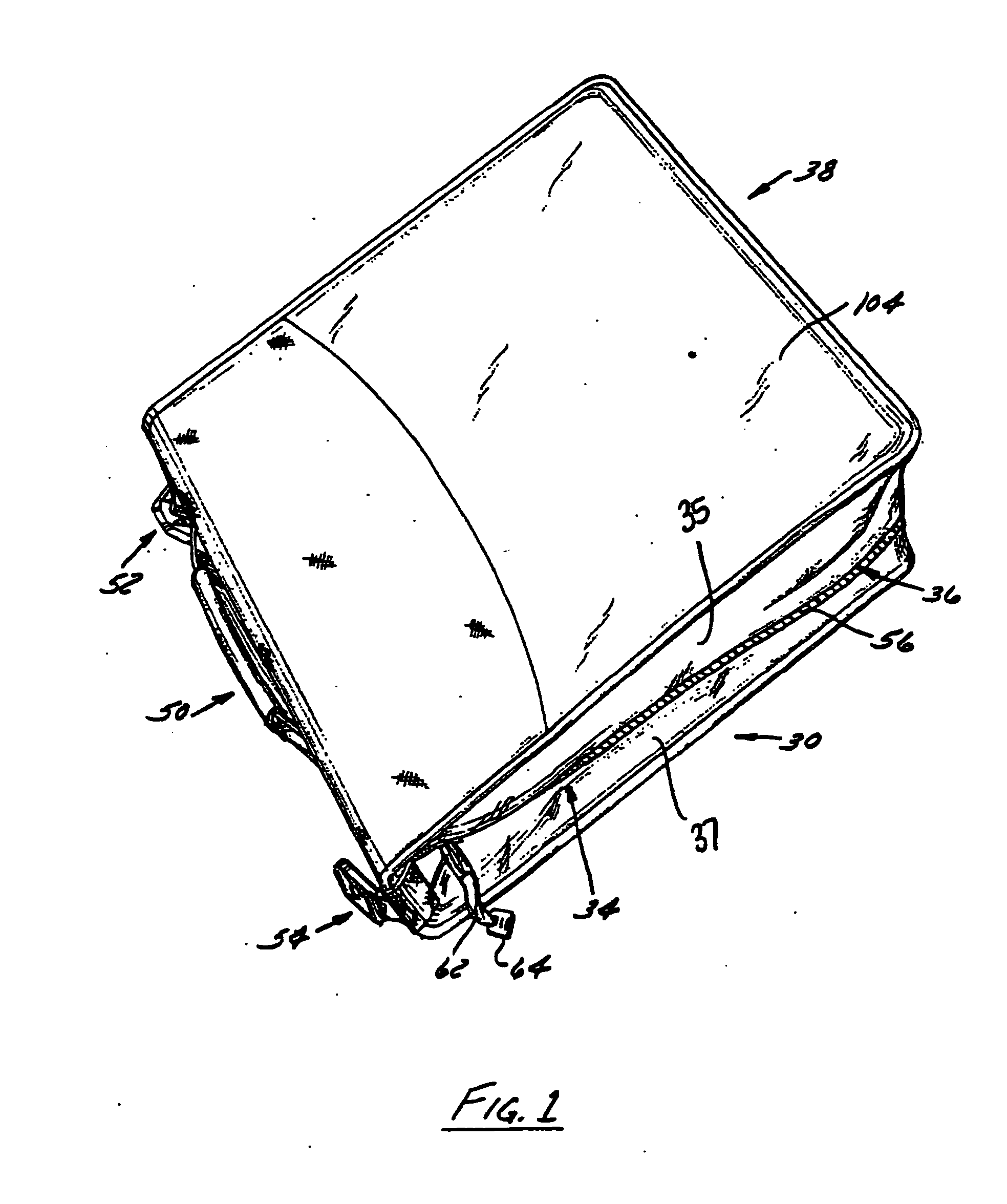Binder with expandable pouch
a technology of expandable pouches and binder covers, which is applied in the field of binder covers, can solve the problems of increasing assembly costs, increasing assembly costs, and difficulty in closing the binder, and achieves the effect of more robustness
- Summary
- Abstract
- Description
- Claims
- Application Information
AI Technical Summary
Benefits of technology
Problems solved by technology
Method used
Image
Examples
Embodiment Construction
[0039]FIGS. 1-4 illustrate a preferred embodiment of a binder arrangement 30 of the invention that preferably includes at least one binder 32 (FIG. 4) and flexible fabric sidewalls 34 that retain the binder arrangement 30 in a closed position via a fastening arrangement 36. When disposed in the closed position with the fastening arrangement engaged, such as is shown in FIGS. 1-3, the binder arrangement 30 preferably forms a case 38 that houses and protects the binder contents.
[0040] The binder arrangement 30 has a front cover 40 that overlies a rear cover 42 with the front and rear covers each respectively joined by a hinge 44, 46 to a spine 48 that carries a handle 50 and a pair of strap attachment loops 52, 54. As is shown in FIG. 3, each sidewall 34 is interrupted by and releasably joined together by a fastening arrangement 36 that preferably is a zipper 56 dividing the sidewall 34 into an upper skirt 35 and lower skirt 37. To facilitate opening and closing, a slide 58 of the zi...
PUM
 Login to View More
Login to View More Abstract
Description
Claims
Application Information
 Login to View More
Login to View More - R&D
- Intellectual Property
- Life Sciences
- Materials
- Tech Scout
- Unparalleled Data Quality
- Higher Quality Content
- 60% Fewer Hallucinations
Browse by: Latest US Patents, China's latest patents, Technical Efficacy Thesaurus, Application Domain, Technology Topic, Popular Technical Reports.
© 2025 PatSnap. All rights reserved.Legal|Privacy policy|Modern Slavery Act Transparency Statement|Sitemap|About US| Contact US: help@patsnap.com



